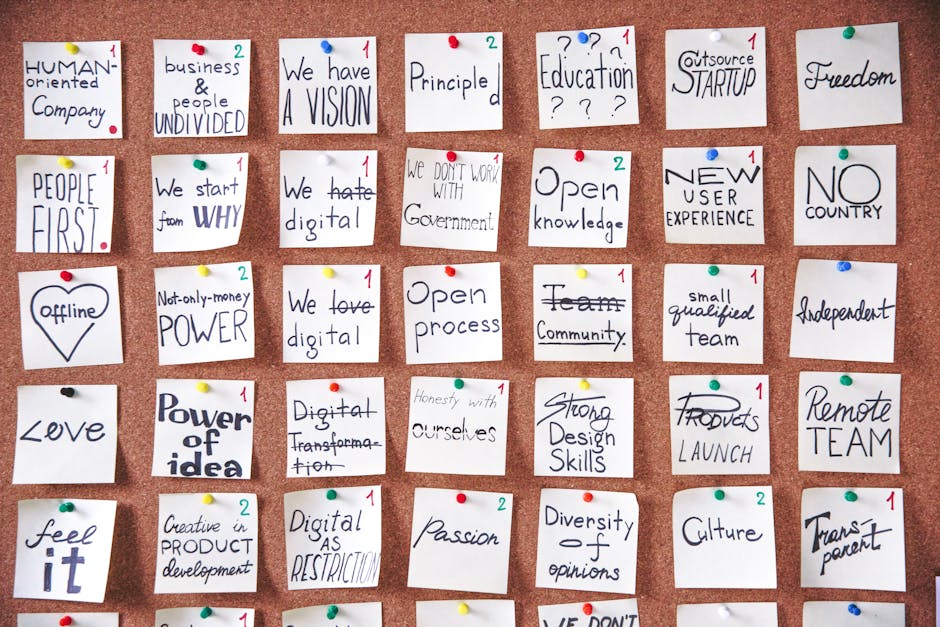The Role of the Product Owner in Agile Teams
You’re about to embark on the world of Agile teams, where the Product Owner is the ultimate superhero. This unsung hero wears many hats – defining product vision, prioritising backlogs, and communicating with stakeholders, all while balancing competing demands. It’s a delicate dance of data-driven decision-making, market analysis, and customer empathy. But, you’re probably wondering, how do they keep it all together? From conducting user interviews to allocating resources wisely, the Product Owner’s secrets are about to be revealed. What do you say we delve into uncovering the secrets of their success?
Key Takeaways
• The Product Owner defines and prioritises the product backlog, ensuring it is refined and ready for development.• They are responsible for understanding customer needs, market trends, and competitor analysis to shape the product vision.• Effective communication with stakeholders is crucial, as the Product Owner must ensure everyone is alined with the product’s goals and objectives.• The Product Owner balances competing demands and needs, making tough decisions on resource allocation and prioritisation.• By making data-driven prioritisation decisions, the Product Owner guides the development team to deliver the highest value features and maximise ROI.
Defining Product Vision and Goals

As you step into the role of a product owner, you’re tasked with defining a product vision and goals that will guide your team’s efforts, and ultimately, make or break your product’s success.
To start, you’ll need to get your hands dirty with some serious market analysis. What’s the competition doing? What’re the trends? Where are the gaps? Get cosy with data, and don’t be afraid to get a little nerdy.
But, let’s not forget the most important piece of the puzzle: customer empathy. You can’t create a product vision without understanding the people you’re creating for. What’re their pain points? What keeps them up at nite? What makes them tick?
Get inside their heads, and stay there. Conduct user interviews, surveys, and observations. Yes, it’s a lot of work, but trust us, it’s worth it.
When you combine market analysis with customer empathy, you’ll start to see patterns emerge, and your product vision will start to take shape. It’s like finding the missing piece of a puzzle – suddenly, everything clicks.
Now, you’ve got a clear direction, and your team can start building something truly remarkable. So, buckle up, product owner! It’s time to get to work and define a product vision that will make your customers (and your team) swoon.
Prioritising and Refining Backlogs

You’re now faced with a formidable backlog of features, fixes, and ideas, and it’s your job to prioritise and refine them into a coherent roadmap that’ll make your team and stakeholders swoon.
Think of it as a treasure trove of possibilities, but also a hot mess of conflicting priorities and vague requirements. Your mission, should you choose to accept it, is to tame this beast and turn it into a well-oiled machine that delivers value to your customers.
Backlog grooming is your best friend here. It’s the process of regularly reviewing, refining, and prioritising your backlog to guaranty it’s relevant, realistic, and alined with your product vision.
You’ll need to get cosy with your stakeholders, understanding their needs and expectations, and negotiate priorities that meet everyone’s needs (or at least, most people’s needs most of the time).
Prioritisation frameworks like MoSCoW, Kano, or even a simple Eisenhower Matrix can be your trusted sidekicks in this quest.
They’ll help you categorise and weigh your backlog items, guaranteeing that the most valuable and urgent ones get the attention they deserve.
Remember, prioritisation is a continuous process, not a one-time task. As new items emerge and priorities shift, you’ll need to revisit and adjust your backlog regularly.
Communicating With Stakeholders Effectively

By the time you’ve tamed the backlog beast, stakeholders will be knocking on your door, anxious to know what’s cooking – and it’s your job to dish out the details in a way that makes them feel like they’re getting a five-star meal.
As a Product Owner, communicating with stakeholders effectively is vital to keep everyone on the same page. It’s not about throwing a bunch of information at them and hoping they’ll understand; it’s about crafting a narrative that resonates.
You need to conduct a Stakeholder Analysis to identify who your key stakeholders are, what their interests are, and what they expect from you.
This will help you tailor your communication strategy to meet their needs. Are they interested in the big picture or the minute details? Do they want regular updates or just the highlights?
Knowing your stakeholders inside out will help you create a Communication Strategy that’s both informative and engaging, and guaranty that everyone is alined.
Balancing Competing Demands and Needs

Now that you’ve mastered the art of stakeholder communication, it’s time to face the real challenge: juggling the competing demands and needs that’ll inevitably arise. You’ve got multiple stakeholders, each with their own agendas, priorities, and expectations.
It’s like trying to solve a puzzle blindfolded while being attacked by a swarm of bees. Okay, maybe that’s a bit dramatic, but you get the idea.
As the Product Owner, it’s your job to perform a stakeholder analysis, identifying the key players and their interests. You’ll need to allocate resources wisely, making sure you’re meeting the needs of the most critical stakeholders while keeping the others satisfied (or at least, not too disgruntled).
Think of it as a delicate balancing act, where one wrong move can send the entire project tumbling down.
You can’t make everyone happy all the time. But what you can do is prioritise, prioritise, prioritise. Focus on the needs that’ll have the most significant impact on the project’s success.
Be prepared to make tough decisions, and don’t be afraid to say no (or at least, ‘not right now’). Remember, resource allocation is a zero-sum game – every yes means a no somewhere else.
Making Data-Driven Prioritisation Decisions

As you’re drowning in a sea of stakeholder demands, you must cling to data-driven prioritisation like a lifeline, letting the cold, hard facts guide your decision-making. It’s easy to get swept away by the loudest voices or most persuasive arguments, but as a Product Owner, you can’t afford to let emotions dictate your roadmap. That’s where data comes in – your trusty compass in the chaotic world of stakeholder management.
When faced with competing demands, you need to scrutinise each feature or requirement through the lens of cost analysis. What’s the estimated effort required to deliver each item? What’s the potential ROI? By quantifying the costs and benefits, you can separate the must-haves from the nice-to-haves. And, let’s be real, the nice-to-haves can be nice to axe when resources are scarce.
But data-driven prioritisation isn’t just about costs; it’s also about performance metrics. What’re your key performance indicators (KPIs)? Which features will move the needle on those metrics? By alining your roadmap with your KPIs, you can confirm that every development cycle is a step towards achieving your product’s goals.
Conclusion
You’ve made it to the finish line!
As a product owner, you’re the captain of the agile ship, charting a course through choppy waters.
Remember, ‘a goal without a plan is just a wish.’
So, prioritise, communicate, and balance those competing demands like a pro.
And when the going gets tough, rely on data-driven decisions to guide you.
Now, go forth and slay those backlogs!
Contact us to discuss our services now!
